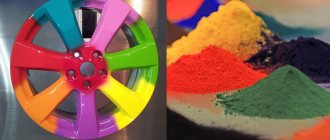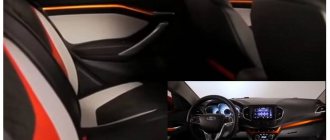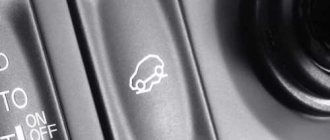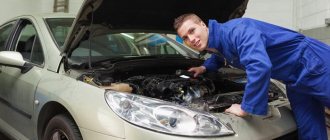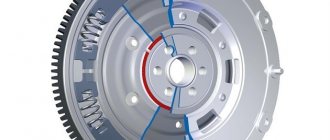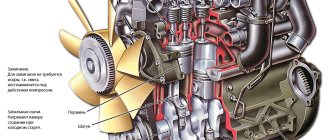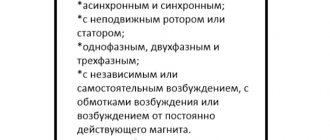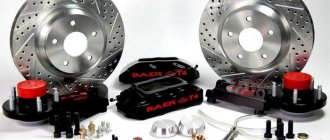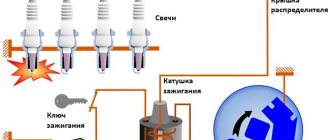Movil: types, which is better and do-it-yourself car treatment
The formation of corrosion on a car body can lead not only to the loss of the appearance of the car, but with prolonged exposure to the complete destruction of thin metal over the entire area.
If the engine or transmission after a major overhaul, in terms of its main characteristics, practically does not differ from the new state, then eliminating numerous areas of metal rusting can be very difficult, and sometimes even economically impractical. It is much easier to prevent the destruction of a metal body than to then try to patch through holes using welding or putty. One of the most effective means for preventing the formation of corrosion on a car body is Movil.
Anticorrosive is deservedly popular among car enthusiasts. How to apply Movil to a metal surface, as well as which Movil is best for a car, will be described in detail in the article.
Types of anticorrosives
When planning anti-corrosion treatment for a car, the Bolivar owner intends to purchase an effective product that meets all requirements. With the huge variety of products presented on the auto chemical market today, choosing the right composition becomes even more difficult.
Modern anticorrosion agents, in addition to the base (synthetic resins or bitumen and wax can be used as a base), also include additives that give the composition additional qualities. Manufacturers usually add some kind of “zest” in the form of zinc, bronze, rubber, polymers or other additives, which makes it possible to give the product individuality and distinguish it from others.
When considering which anticorrosive agent is best to purchase for the underbody of a car, you should understand that you need to choose from those that serve exactly these purposes; the scope of application is of great importance - this information is indicated by the manufacturer. Thus, mastics that harden are used to treat external elements (underbody and wheel arches), and non-drying automotive products are intended for hidden parts (thresholds, pillars).
Depending on the component composition and specificity, products are divided into groups:
- Bitumen mastics. Anticorrosion agents of this category are made on the basis of bitumen or synthetic resins; they protect against rusting and mechanical stress, perfectly preserving metal parts. They are applied in a layer of 250-400 microns, which also provides sound insulation.
- Rubber and PVC materials are considered the most durable and reliable; they are used in a very heated form. As a rule, materials of this category are used in factory conditions.
- Slate mastic. High-strength products based on bitumen and synthetic resins with a mineral filler are better suited than others for self-treatment of the bottom and wheel arches.
- Anti-corrosion primer is used before applying paintwork to prevent rusting. Thus, the paintwork is restored only after preliminary priming with an anti-corrosion compound.
- Anti-gravel. High-strength anti-corrosion protection that protects body parts from bouncing stones and gravel from under the wheels of the car.
- Liquid plastic is an anti-corrosion paint based on acrylic compounds that forms a film that protects against rusting processes. More often used for thresholds, hidden cavities of arches, etc. as an additional protection option, since it does not differ in mechanical stability.
- Non-drying oil compositions remain in a liquid consistency for the entire period of use; they perfectly fill all pores and cracks, but due to their fluidity they can only be used for hidden cavities.
- Paraffin and wax compositions provide an elastic film, protecting against corrosion; they are also highly resistant to temperature changes; they are used, like oil ones, for hidden elements, but are not suitable for moving parts.
Since the choice of anticorrosive for transport is initially based on the area of application of the vehicle, if it is necessary to carry out work on processing specific parts, suitable options should be considered. It is better to treat the bottom and pillars of the car with a high-strength hardening anticorrosive agent, such as shale mastic. Bitumen-rubber mastics, which protect against the undesirable influence of electrolytes, as well as rubber and bitumen mastics, which include plasticizer polymers that increase elasticity and strength and cope well with protection at low temperatures, have proven themselves to be excellent in their work.
What is "Movil"?
Many motorists call any anti-corrosion agent for a car Movil, but this is incorrect. The original Movil contains the following components:
- Engine oil.
- Drying oil.
- Anti-corrosion substances.
If an anti-corrosion drug has a different composition, then it cannot be called Movil. A product for protecting the body from rust, under the original name “Movil,” was simultaneously developed by research institutes located in Moscow and Vilnius, for which it received its name from the first letters of these cities.
Anticorrosive agent was invented in the last century, but despite the huge range of various anti-corrosion agents available on the Russian market, this anti-corrosion agent is still in high demand among car owners today, due to its low cost and high quality.
To know which Movil to choose for your car and how to use this anti-corrosion agent, you need to determine what type of rust preventative to purchase for treating the body.
Types of anticorrosive
Types of Movil for cars are presented in 3 categories:
1. Aerosols are the most popular and convenient means for applying anti-corrosion composition.
The price of a 520 ml can ranges from 200 to 300 rubles. Treating the car body with such packaging will cost the motorist much more, due to the gas inside the canister, which is used for spraying.
The inconvenience of using this type of anticorrosion agent may also lie in the need to keep the canister in a vertical position, so for anti-corrosion treatment it is better to purchase a canister equipped with a special tube with a spray at the end.
2. Liquid Movil is an inexpensive option for use as an anti-corrosion treatment. The cost of a 3-liter canister is only 300 - 400 rubles.
The consistency of the liquid composition allows for effective treatment of hidden cavities. The product is easily applied to thresholds and internal door cavities. You can get the most even distribution of the substance inside hidden cavities using an original spherical nozzle, which allows you to process every square centimeter of the internal area of the metal elements of the body.
3. Paste-like Movil, most often sold in tin or plastic packaging, in the form of cans.
The cost of such a drug for treating a car is about 200 rubles. per package weighing 0.86 kg. The product is applied to the surface to be treated with a brush, and to treat internal cavities it is diluted with a solvent.
After a vehicle body treatment product has been selected, it is necessary to thoroughly prepare the body surface on which the anti-corrosion compound will be applied.
Preparing the car
The underbody of the car is most often subjected to anti-corrosion treatment. This part of the body is most susceptible to destructive processes, especially when the car has to be operated in high humidity.
Mechanical damage from stones and sand from under the wheels also causes significant damage to the lower part of the car body. The following body elements are subjected to anti-corrosion treatment using Movil:
- Spars.
- Floor thresholds.
- Door pockets.
- Front and rear arches.
- Central pillars.
- Headlight covers.
All listed places must be properly prepared. First of all, it is necessary to thoroughly clean the surface to be treated from dirt and dust. For this purpose, you can use a portable car wash with the addition of special detergents that will clean the surface not only of dirt, but also of oily deposits.
After thorough cleaning. The surface on which Movil will be applied must be free from moisture. If the treatment is carried out in the summer, then it is enough to dry the car in the open air for several hours. In cold or damp seasons, you need to use a compressor to remove moisture. Blowing with compressed air will reliably remove moisture from the surface, after which it will be possible to apply the working solution to the metal surface without any obstacles.
After cleaning the surface of the underbody of the car from contamination, you should inspect the paintwork of the lower part of the body. If areas of paint peeling or swelling of the paint are identified, then such areas must be cleaned with a wire brush or coarse sandpaper. If pockets of rust are found on the underside of the car, such places must also be properly treated before applying Movil.
You can also use sandpaper or a grinder to remove corrosion.
When the metal surface is cleaned, it should be treated with any rust converter in order to stop the destructive process in the metal.
After completing all preparatory procedures, you can begin directly applying the anti-corrosion composition to the underbody of the car.
How to apply Movil
Do-it-yourself car treatment with Movil can be done in a garage, without the need to use expensive equipment. What body treatment tool you will need to apply the anti-corrosion agent depends on its consistency.
Liquid Movil is much more practical to apply using a sprayer. If it is not possible to use a liquid product or you don’t know how to dilute the Movil to the desired consistency, you should use a small brush.
If you need to dilute Movil, then this is not difficult to do. For this purpose, you can successfully use “White spirit” or “646” solvent.
The anticorrosive agent is applied to the previously prepared surface in an even layer. The vehicle can only be operated a few days after the anti-corrosion treatment has been completed.
Precautionary measures
- Movil contains substances, inhaling vapors of which can cause poisoning, so it is recommended to carry out work outdoors or in a well-ventilated area.
- In order to be able to safely use the car after application, you also need to know how long Movil takes to dry. The anti-corrosion agent takes a very long time to dry, so an unpleasant odor will be felt in the car interior for at least 3 days. To avoid poisoning from solvents and other volatile substances, after applying the substance, you should stop driving the car for several days.
- In addition to vapor poisoning, during treatment you can get burned from contact of the working composition with exposed skin or eyes, so it is recommended to carry out anti-corrosion work in closed clothing and gloves. And when using aerosol cans or a spray, wear safety glasses.
Autopreservative Movil PITON is a modern product. Why
Weather conditions affect the condition of any car.
Over time, the body and hidden cavities of the car begin to rust. If you do not take care of the anti-corrosion protection of the body, bottom, and internal cavities in time, they may rot. Closed body cavities that are susceptible to corrosion:
- Front roof pillar. Due to the difference in temperature outside and inside the car, condensation occurs, which accumulates and leads to corrosion over time.
- Thresholds. Holes in the thresholds allow moisture to pass through, which contributes to the formation of rust.
- Inner surface of the luggage compartment. Typically, the walls of the luggage compartment are lined with felt material. Felt absorbs and retains moisture well. This promotes rust.
- Spars. Condensation leads to corrosion.
- The space between the rear fenders and wheel arches (in the trunk).
- Floors in the salon. The dampness that comes with shoes in rainy weather contributes to the destruction of the metal.
- Inner surface of the door. Glass seals allow moisture to pass through, so the door joints rust.
- Places under door seals. Moisture accumulates and mold and rust form.
Car enthusiasts are interested in how to treat hidden car cavities. How to deal with corrosion? On the forums it is advised to treat the hidden car cavity with a “pushsal”. “Pushsalo” is a preservative petroleum lubricant that was very popular 20-30 years ago. Some car enthusiasts are inclined to treat their car with cannon fat, explaining this by reliability and efficiency. However, this is not so. “Pushsalo” is a relic of the past. Why? “Pushsalo” is not a ready-made product that can be immediately applied to hidden cavities. It needs to be diluted with waste, nigrol, paraffin, etc. Experienced craftsmen know how to prepare the product correctly and in what proportions. However, it will be difficult for beginners.
The product must be heated in a water bath until fluid and immediately applied to the metal. At high temperatures, especially in summer, “pussalo” can flow out of the technical openings of hidden cavities. There has long been a more modern and reliable product on the market - Movil. How does Movil work?
Air and moisture are the main causes of metal destruction. Movil insulates the body from atmospheric influences. In addition, thanks to the active substance - an inhibitor, the car preservative fights against the corrosion process that has already begun. Movil car preservative is a modern remedy. Why?
- The composition contains special additives that displace moisture.
- The body can be treated with Movil without removing the bitumen mastic. It is compatible with all types of anti-corrosion coatings.
- Movil is applied both to bare metal and to any paint coating.
You can buy Movil in an aerosol can or in a special can for a pistol. If you want to treat the hidden cavities of the car with your own hands, Movil spray is what you need.
Do-it-yourself treatment of hidden cavities with Movil PITON in an aerosol. Treatment of internal door surfaces
1. Shake the can for 2-3 minutes to stir the contents. 2. The kit includes a tube with a brass tip. A tube is inserted through special technological holes. The holes are located at the bottom of the wing. If you find it difficult to find them, you can look at the instructions: map of service holes. 3. A few hours after treatment, you can go.4. If the cylinder has not been completely used up, clean the valve. To do this, turn the container over with the spray head down and blow out the contents until the stream becomes discolored. Now Movil in an aerosol will not dry out, and you can use it in the future. As we have seen, Movil in a spray can is convenient and versatile. It’s better to buy Movil in an aerosol and take care of your car now than to deal with rust later.
How to choose Movil for a car
An article about Movil: varieties, selection rules, working with Movil - tips and important recommendations. At the end of the article there is a video on how to “mobilize” a car.
The underbody of the car is most susceptible to corrosion; moisture and road dirt accumulate on it. We don’t see what condition it’s in because it’s inaccessible. Therefore, a rusty bottom is one of the most common problems on the body. In order to put an end to rust formation once and for all, it is necessary to treat problem areas with anti-corrosion agents, among which Movil stands out.
Repeated anti-corrosion treatment of the car
Repeated anti-corrosion treatment of a car is usually carried out every two years. At the same time, the hood and trunk lids, reinforcements of the engine compartment, trunk and floor on the interior side can be processed less frequently.
Preparing the machine for applying anticorrosion and the processing process itself is as follows:
- Before repeated anti-corrosion treatment, first of all, you need to wash the car thoroughly and clean all drainage holes.
- We advise you to pay special attention to the large number of hidden cavities and pockets - a lot of dirt accumulates in them, which over time leads to corrosion (read more about how to properly wash your car).
- After washing the car, it must be dried, and only then proceed with anti-corrosion treatment.
- Wipe areas of the bottom with damaged, cracked or peeling anti-corrosion material with gasoline and apply a fresh layer of anti-corrosion material.
- Pay special attention to the wing arches and the areas around the perimeter of the fender liners.
If the treatment was carried out irregularly, then in some places (usually on the bottom of the car) the factory anticorrosive agent may be damaged to the metal. This is where red spots appear, which eat through the iron in 2-3 years.
In this case, before applying the anti-corrosion coating, rather labor-intensive work must be carried out to remove rust, which is performed either mechanically (with abrasive skins), or using chemical compounds (rust converters), or electrochemically. We talked in detail about rust removal here.
Areas of the body that have been stripped down to metal must be primed, after which anti-corrosion mastic can be applied.
When choosing a mastic for re-processing the underbody of a car, you should first of all pay attention to its anti-corrosion properties and only then to its mechanical strength.
If you decide to carry out repeated anti-corrosion treatment at a specialized station, then do not forget to first remove the fender liners, otherwise the wheel arches will remain untreated. We also recommend that you read the tips on which car service to choose.
The video below very clearly shows how anti-corrosion treatment is carried out at a branded service station.
Anti-corrosion materials
There are several different types of anticorrosion agents that are popular among car enthusiasts. Anti-gravity agents are most commonly used
, which are small cans filled with an expensive substance containing rubber to hold the bottom elements together. Apply by spraying.
Next, you can consider paste-like materials or mastics
, which are applied in a thin layer to body elements subject to corrosion.
What remains is Movil, which consists of numerous additives, motor oil and drying oil
. This composition is patented, so other mixtures and proportions can no longer be called Movils - they are distinguished by their low cost and ease of application. However, over time, the treated layers are washed away, which leads to the need to treat the body again.
Classification of Movils by physical condition
This classification involves division into several types:
- spray;
- liquid;
- paste.
The spray or aerosol is supplied in 500 milliliter cans. One can will cost 4-5 dollars and will be very useful for covering the sills and arches of a problematic body. Basically, the cylinder is equipped with an additional tube, which will help when covering hard-to-reach surfaces. If you don’t have a straw, you’ll have to get a gun or spray bottle, but the gun can only spray liquid substances.
The liquid is supplied in cans. A container with Movil with a volume of 3 liters will cost 6-7 dollars. Using liquid Movil is much easier than using a spray. You will need to get a brush or even a sponge with which you can apply the anti-corrosion material.
When used, liquid Movil is poured into a pistol or another container, but with a wider neck. The remaining preservative is poured into the canister. The liquid product has sufficient viscosity, so it is also useful when treating hard-to-reach surfaces, as well as the bottom. The liquid preservative has no significant disadvantages.
Movil paste is distributed in metal or plastic jars. The average cost of an 800 gram jar is about $4. The area of use for the paste is the same as for the liquid. The paste has a higher viscosity, so it must be diluted with solvent 646 - this is done right before processing.
The paste can be used to treat any body surface (arches, sills, pillars), since it also does not have any significant drawbacks.
First anti-corrosion treatment of a car
It is best to carry out the first anti-corrosion treatment in a specialized workshop, where experienced craftsmen, in addition to the actual treatment of the car, will also drill all the necessary holes and install the fender liners in their places. But if you wish and have some skill, these operations can be performed with your own hands.
During the first anti-corrosion treatment, it is permissible to use inexpensive materials of domestic production. Movil or similar compositions are most often used as an anticorrosion agent Read more about this in the material: How to treat the underbody of a car?
The most vulnerable places for corrosion are the thresholds, boxes above the jack brackets, cross members and reinforcements on the bottom side, side members and doors closed at the ends - they require especially careful treatment.
Anti-corrosion treatment of the car from the inside occurs through special technological holes, that is, without disassembling the body and doors. The maintenance manual for your car should contain a diagram of anti-corrosion treatment indicating all hidden cavities and how to access them.
Tectyl into these places from an aerosol can, because, unlike similar products, it has a flexible tube with a sprayer, with which it is quite convenient to treat hidden cavities.
At service stations, anticorrosive agents are applied in hidden cavities using airless spraying under a pressure of 6-8 atmospheres. During the supply of the composition, it is mixed with air and a certain mist is formed, after drying it produces a very thin, but at the same time with a high degree of protection, anti-corrosion coating. Moreover, it is completely transparent.
After anti-corrosion treatment, plastic fender liners are usually installed in the wheel arches. But the last “squeak” is the so-called liquid fender liners, which are a viscous paste that is applied directly to the body and, after hardening, turns into a kind of plastic.
Here are a few more tricks and useful tips that will help when carrying out anti-corrosion treatment of your car:
- Particular attention should be paid to the uniformity of mastic application: a layer that is too thin will not be strong enough and will begin to quickly collapse under the impacts of small pebbles, and a layer that is too thick will crack and peel off under the influence of vibration.
- The most optimal thickness of the anti-corrosion coating is approximately one and a half to two millimeters. In this case, the mastic consumption will be about 4-5 kilograms per car.
- Before the first signs of corrosion appear, the mechanical properties of the protective layer are more important than the anti-corrosion properties.
- It would be useful to cover the entire floor from the inside with a layer of BPM-1 anti-noise mastic.
- By removing the rubber plugs at the ends of the thresholds, you can significantly extend the service life of the latter. With the fender liners installed, dirt and debris still do not get into these holes, and through ventilation of the sills while the car is moving will only benefit them.
You can carry out anti-corrosion treatment on your car at any time of the year.
Classification of Movils by chemical composition
In addition to the classic Movil formula, some manufacturers try to add something of their own in the form of one additive or another. This somewhat changes the properties of the anticorrosive, but also significantly affects the cost of the coating. The following compositions are distinguished:
- regular Movil without additives;
- composition with added zinc;
- composition with the addition of corrosion converters.
We will not consider the usual Movil, but will pay more attention to its modifications.
Zinc Movil is distinguished by the fact that before its use there is no need to remove corrosion - the damaged areas are immediately treated with Movil containing zinc, which will remain after the coating is applied. The zinc coating will significantly increase the service life of body elements, since it will create auxiliary protection while the car is moving.
The corrosion converter contained in Movil independently eats away rust, so you won’t need sandpaper or a grinder before processing.
Advantages of modified Movils:
- it will take less time to process surfaces;
- less financial costs;
- less labor-intensive to work with.
The only drawback of the modifications is their higher cost.
Why anti-corrosion treatment of a car is carried out?
All cars, regardless of model, class and operating conditions, are subject to corrosion. Figuratively speaking, from the moment it leaves the production line, every car is haunted by its worst enemy - rust. If proper care is regularly neglected, any car can reach a condition similar to the one in the photo above.
Despite the fact that each manufacturer treats the cars they produce to prevent further aging and rust with a special anti-corrosion mastic (and some parts are even coated with zinc), this is still not enough. Sand flying from under the wheels, working like a sandblast, crushed stone causing chips from falling into holes on the road, and so on - make themselves felt very soon.
The situation gets worse in winter, when the roads are also sprinkled with chemicals. The alkali and salt they contain corrode the iron body parts of cars at an accelerated pace. So anti-corrosion treatment of the body, if you want to preserve and protect your car from corrosion, is really a very important thing.
Of course, a rotten body can be restored, but the cost is comparable to buying a used car. It is the corrosion of the body that determines the service life of the car, so you should not wait for through holes to appear.
The main goal of additional anti-corrosion treatment of a still new car, performed by the owner either with his own hands or at a specialized station, is to preserve the integrity of the factory protective coating for as long as possible.
Even with factory anti-corrosion treatment, additional complete anti-corrosion treatment of the car will not be superfluous, since it is aimed at long-term preservation of the original appearance of the car and the strength of the metal. This procedure takes 3-4 hours if it is performed by qualified specialists using professional equipment.
Experienced professionals advise checking the condition of the machine’s anti-corrosion coating at least once every six months. During repairs or replacement of body parts (for example, after an accident), the anticorrosive agent must be renewed without fail.
The principle of applying Movil
When applying the coating, you will be convinced of another advantage of Movil - it is very easy to process body elements with it. Most of the work can be done independently without the use of additional help.
If you use regular Movil, before starting processing you will need to get rid of dirt and then corrosion. Classic abrasive tools such as a sandpaper, grinder or grinder can help with this. A corrosion solvent applied with a brush or sponge is also useful.
Once the corrosion has been removed, the treated areas should be washed and left for a while to allow the moisture to dry.
. And when the surface is dry and free of corrosion, you can begin treating it with Movil.
It is recommended to treat the body with several layers of anticorrosive to achieve the greatest effect.
These simple actions on the car body are carried out every year before the first snow falls. Even if you don’t see places covered with rust, anticorrosive treatment won’t hurt at all. Constant treatment with Movil will help rid the car of corrosion and increase the service life of its most capricious elements without significant financial costs.
Video on how to “movilize” a car:
Movil processing
Preparing the car
The underbody of the car, the lower part of the body, is most susceptible to damaging factors. Sand and stones from under the wheels lead to mechanical damage, high humidity and temperature changes create ideal conditions for corrosion.
First of all, all these places are thoroughly cleaned of dirt, not only from road dust, but also from oily traces. After washing, the surfaces are dried. In the warm season - in the open air, in cold periods - using a compressor.
Before treating the car body, you need to carefully inspect the paintwork and identify problem areas. Corroded areas must be cleaned of loose rust and peeling paint using sandpaper or a special wire brush. Then the lesions should be coated with a rust converter and only then begin to apply the product.
Application Features
Depending on the consistency of the product and the form of its release, the necessary tool is selected. To process a car, you do not need expensive equipment; ordinary garage conditions are sufficient.
The anticorrosive agent is distributed over a previously cleaned and prepared surface, including hard-to-reach areas. After this, it is advisable not to operate the machine for several days.
It is important to know that Movil is aggressive towards rubber. Therefore, during the treatment of the body, it is necessary to ensure that the substance does not get on the rubberized areas
Precautionary measures
The components that make up anti-corrosion agents are quite volatile. Inhalation of vapors can lead to poisoning and burns to the mucous membranes of the nose and larynx. Coating the machine with an anti-corrosion agent should be carried out in a room with a constant flow of fresh air.
All work with Movil must be carried out wearing gloves and protective clothing. In the case of using aerosols, it would be useful to wear glasses or a mask to cover your eyes and face from particles of chemically active substances.
Movil for cars - what is it and how to use it
packaging Increasing the corrosion resistance of a car body is an important issue of concern to any motorist.
The modern level of painting, priming or cataphoresis treatment of metal allows manufacturers to confidently declare a guarantee of 5 or even 10 years against through corrosion. However, the use of increasingly aggressive reagents in winter, as well as constant mechanical impact on the paintwork, especially in the area of the arches and bottom, forces one to resort to additional treatment of the body. The market for anti-corrosion materials is very wide, but material such as Movil enjoys well-deserved recognition, which, together with its low price, puts it in first place in popularity in our country.
How to wash Movil?
Removing product from old paintwork is a labor-intensive process. The inadmissibility of using aggressive solvents has already been mentioned above. Therefore, it is necessary to use substances that are less effective, but do not damage the surface of the car. Among the possible options:
- Kerosene (preferably aviation fuel).
- Isopropyl alcohol.
- A solution of laundry soap in turpentine (50/50).
A little trick: if you still dare to try gasoline, then the surface cleaned from Movil should be IMMEDIATELY treated with any car shampoo. The same should be done when using kerosene.
Theme Options
Movil for cars - how to use
The best option for using Movil is to apply it to arches, welds and hidden cavities of a new car, since application to a surface that is already susceptible to corrosion will not solve the problem, but will only slow down its development.
It is highly not recommended to treat cars with Movil in the interior, since this material has a strong specific odor and can cause poisoning, similar to poisoning with paint fumes.
The main requirement that must be met regardless of the type of surface, its location and method of application is the absence of moisture, since if this is not met, you can personally ensure the formation of a corrosion center by preserving the water under a layer of protective material.
Movil must be applied to a cleaned surface by spraying or coating, and it is very important to choose the right consistency by adding a solvent. A mixture that is too thick will not penetrate the weld, will not lie tightly and evenly on the surface, and an overly plastic or even flowing mixture will simply drain from the surface.
Do not forget that the consistency of Movil for cars depends very much on temperature, so it is better to carry out work in a warm room, this will eliminate the need for excessive plasticization. In extreme heat and under the influence of direct sunlight, the material liquefies, flows off the surface and greatly increases the odor, this is another reason why it is not recommended to add too much solvent.
The situation is much simpler with Movil in the form of an aerosol can, since the consistency has already been selected and no additional devices are required for application. In this case, the treatment must be repeated in several stages as the applied layers harden, since when sprayed, the thickness of the anti-corrosion material is extremely small.
In addition, aerosol spraying uses efficient but quick-drying sprays, so the durability of the protective layer is usually less.
Hidden cavities are best treated by extrusion, that is, pumping anti-corrosion material under pressure through a metal tube, since spraying and coating will not allow for its uniform distribution.
It must be remembered that after application the car should not be driven for at least 24 hours. During this time, the Movil should thicken, which will ensure good adhesion to the surface. No additional drying is required. The preparation should not dry out completely, since this is the main guarantee of its effective operation; over time, Movil thickens and becomes elastic, but not completely dry.
Surfaces that are recommended to be treated:
- hood and trunk lid stiffeners;
- spars;
- cavities of the front and rear arches;
- door pockets;
- headlight housings;
- B-pillars;
- floor thresholds.
It is not advisable to treat open surfaces exposed to atmospheric or mechanical influences, such as the bottom of a car, since anti-gravel coating is used for such places.
There is a misconception that Movil for cars can promote galvanizing of parts, which is why some motorists add up to 25% zinc oxide to its composition, which does not in any way affect the anti-corrosion resistance of the metal, since the effect of Movil is based on conservation, and the inhibitors it contains neutralize corrosion, no electrolytic dissociation occurs.
You should not rely on the assurances of marketers that Movil with a rust converter does not require pre-treatment of the surface. The concentration of the converter or inhibitor in it is not enough to eliminate foci of corrosion, and it is intended to increase the effectiveness of protection, and not to eliminate rust.
Briefly: why do we need Movil?
Adsorber VAZ 2114: design and operating features
The primary task for which Movil is created and used to this day is to protect the body and other metal parts from corrosion.
Today, it is customary to call almost any anti-corrosion agent Movil. But do not forget that in the beginning only those anticorrosion agents that contained motor oil, drying oils and corrosion inhibitors were called this way. The unique recipe has been used since Soviet times; it was developed by specialists from research institutes in Moscow and Vilnius, hence the original name.
With this product it is easy to treat hidden cavities. To take timely care of your car and protect it from corrosion, experienced drivers use Movil for cars in cans.
Modern anticorrosion agents have almost completely preserved the original composition and are now created on the basis of:
- motor oil;
- drying oils or other film-forming substances;
- anti-corrosion substances;
- solvents.
Each component has its own individual function. For example, thanks to motor oil, a protective layer is created on the metal surface of the body, isolating it from the effects of oxygen. In addition, the oil prevents the body and important elements from coming into contact with water, steam and other substances hazardous to metal.
Movil in cylinders is convenient due to application
The task of anti-corrosion additives is to stop pockets of rust and stop their development, simultaneously preventing the emergence of new pockets. Thanks to these components, when applying the composition, a special film is formed that protects the applied layer from rapid evaporation, mechanical damage and contamination.
The solvent is added to ensure that the consistency is moderately viscous. It is on this that the change in the individual properties of the composition depends. For example, anticorrosive with the addition of kerosene has the weakest odor, which quickly disappears. But Movil with white spirit retains its plasticity longer, resists cracks better, dries more slowly, but has a more persistent odor.
How strong the smell of the product will be depends on the solvent added by the manufacturer.
Precautionary measures
application When carrying out work, it is necessary to ensure good ventilation, as well as take fire safety measures, since Movil contains highly flammable components.
Avoid contact with the skin and especially the mucous surfaces of the eyes or nasopharynx, otherwise you should immediately consult a doctor. You should avoid getting Movil on plastic and rubber parts, as it has a negative effect on them. The drug is completely safe for paintwork, but stains of hardened Movil are difficult to remove. Therefore, care should be taken when applying.
In order to avoid a situation where excess Movil flows onto the garage floor (in addition to the obvious sanitary disadvantages, it is also a flammable material), it is recommended that at least 24 hours after treatment, leave the car for several hours in the sun or in a room with a temperature above 25 degrees, having previously placed it on polyethylene. As already mentioned, under the influence of high temperatures the Movil will soften and the excess will flow through the drainage holes in the cavities, after which they can be closed.
It should be remembered that to ensure effective protection of the metal, it is necessary to inspect the condition of the anti-corrosion coating every few months. If Movil for a car has hardened, lost its plasticity and even cracked, it is urgent to repeat the processing procedure with careful adjustment of its composition. To remove the old layer, you can use the same solvent that was used when selecting the consistency, or a product for removing bitumen stains.
Thus, subject to all rules and requirements, Movil is able to provide your car with reliable protection for little money. This automotive preservative can still guarantee a high level of corrosion resistance of your car body at the level of foreign analogues.
How to use Movil with a rust converter and how to choose the right one?
Movil with a rust converter - aerosol and liquid, is used to preserve hidden cavities in the car body. Its purpose is to transform existing rust and prevent the formation of new ones. This is just one of the anticorrosion agents, but it is one of the first to be produced in Russia, therefore it is best known to car enthusiasts.
Initially, the formula of this product was developed by the Moscow and Vilnius Research Institutes, which was reflected in the name. Today, this formula has been improved and various ingredients have been introduced into the composition that improve anti-corrosion properties, including rust converters. Anticorrosion agents in Movil, the name of which is indicated “with a rust converter,” are produced by several Russian companies.
Instructions for use: pre-treatment and application
It is important to understand that even the best converter is not capable of eliminating corrosion whose depth is more than 150 microns (0.15 mm). That is, in any case, thick rust should first be cleaned with abrasive materials
The best tools are a metal brush and a scraper with coarse sandpaper. The more looseness that is removed mechanically, the better the chemical modifier will work.
The purchased compound is applied to the sanded area. You can coat the metal with the converter, for example, with a paint brush or roller. They also practice the immersion method, which is important for small parts, and pouring for hidden cavities. Aerosol products are also available for sale.
As a rule, you can wipe the treated area with a rag after 5-10 minutes (read the label).
Composition and principle of action of Movil
Movil with a converter belongs to PINS - film-forming inhibited petroleum compositions. Its action is that, thanks to penetrant inhibitors, the product penetrates into the micropores of iron oxide, the converter transforms the oxides into a non-corrosive form of iron, and polymer resins form a film on the surface. The film blocks the access of water and oxygen, making further oxidation process impossible.
This anticorrosive contains the following substances:
- drying oil;
- engine oil;
- White Spirit;
- kerosene;
- rust converter;
- inhibitors.
What kind of converter is included in Movil depends on AGAT-AUTO; tannin is used as a converter, transforming residual oxides into iron tannate.
Which anticorrosive agent to choose
There are two main applications for anti-corrosion agents, and accordingly, the requirements for both groups are very different.
Anticorrosion coatings for the underbody and wheel arches are subject to constant abrasive sand and impacts. Therefore, they are required to maintain high strength. Ideally, an anti-corrosion agent for the bottom should have pronounced thixotropic properties - that is, a solid film that reliably resists abrasion, peeling by hard branches and other things that can get under the bottom; at the point of impact it seems to “liquefy”, absorbing the impact energy, rather than cracking or chipping . This anticorrosive will reliably protect the bottom for a long time.
Resistance to salt is very important - in winter the bottom and arches will become covered with a layer of road dirt, that is, de-icing agents will act on the coating for a very long time. An anticorrosive that breaks down under such conditions will not protect the car for a long time.
Such anticorrosives are mainly designed for application with special guns for high-viscosity compounds. This allows you to quickly apply a layer of the required thickness and foam it to improve sound insulation. But thick mastic penetrates micropores and rust very poorly - that is, such a composition must be applied either to a clean, undamaged underbody of a new car, or to first remove or chemically treat existing traces of corrosion.
But anticorrosive agents for hidden cavities, on the contrary, are very fluid - their task is to penetrate into the most inaccessible places, because it is problematic to control the application of anticorrosive with your eyes, unlike treating the bottom. Fluidity allows anticorrosives for hidden cavities to penetrate perfectly into cracks, micropores of paint, and impregnate rust - therefore, very effective corrosion inhibitors can be added to their composition. But the anticorrosive agent must dry quickly, leaving a durable film - otherwise, flowing down like “Movil” or the same “Rust-Stop”, it will “expose” the protection more and more over time.
It is not easy to prepare hidden cavities well for processing - this is not the bottom, which can even be sandblasted to bare metal. Therefore, high requirements are also placed on the anticorrosive agent to displace water and salt solutions - penetrating into microcracks and the rusty layer, the anticorrosive agent must displace the cause of corrosion, and not “seal” it with itself, otherwise the metal will continue to rot.
In any case, do not forget to read the instructions and the quality of preparation: nothing spoils the result of anti-corrosion treatment more than failure to comply with the manufacturer’s requirements for the use of anti-corrosion agent or gross errors in preparing the car.
Manufacturers
Today, Movils with rust converter from the following manufacturers are on sale:
- "Eltrans" - aerosol with a rust converter;
- "Astrokhim" - "Movil Antiruster", an aerosol with a rust converter;
- “AGAT-AUTO” – “Car preservative “Movil””, aerosol with a rust converter;
- “Development of PKF” - “Movil NN MasterWax with rust converter”, liquid and aerosol.
Quite good reviews about the anticorrosive agent produced by Eltrans. It has a memorable design: the bottles depict a medieval knight. They also speak well of Movil NN MasterWax produced by PKF Razvitie.
Which Movil to choose. Wealth of offers on the market
The most popular manufacturers of anti-corrosion products in the modern auto chemical market:
- Astrochem. This company produces Movil aerosol Antiruster. The popularity of the product is explained by its high quality, affordable price and effectiveness.
- Eltrans. This manufacturer offers consumers an effective anti-corrosion aerosol.
- AGAT-AUTO. The company produces the autopreservative Movil in the form of an aerosol with an effective corrosion converter.
- Development of PKF. The company produces HH MasterWax in the form of an aerosol or solution.
Which Movil is cheaper?
Today, Movil aerosols, which contain a rust converter, are in approximately the same price range - about 300 rubles per liter. The final price may vary depending on the region where auto chemicals are sold and the amount of anticorrosive agent purchased. Traditionally, products in small packages are a little more expensive.
Liquid products cost about half as much as aerosols (about 150 rubles per liter). If you plan to apply the product to the surface to be protected using a brush, then there is an opportunity to save money. The liquid can also be applied with a sprayer.
How to breed?
Depending on the surface of application, the consistency of Movil can be adjusted with a solvent. That is, dilute a product that is too thick to the point where it is most convenient to use. It's best to try the diluted mixture on an open area, such as a trunk, to make sure it doesn't run too much or become thick.
It will no longer be possible to dilute a product that is sold in aerosol form. The necessary consistency has been selected here, so it is easier to use.
You should also understand that it is better to use the product in a warm room. But Movil also does not like high temperatures. The product may spread too much when exposed to sunlight. Therefore, you should not add too much solvent to it.
What surfaces is Movil anticorrosive agent intended for?
Anticorrosive agent with a rust converter can be used on metal surfaces, including those coated with paints and varnish. Do not coat rubber parts or any surfaces coated with synthetic mastics or other synthetic chemicals with this product.
Car owners use Movil mainly for treating closed cavities - sills, pillars, surfaces behind the radiator trim. Using it to protect the bottom and external parts is impractical, since it does not have mechanical strength. You should not use this anticorrosive agent inside the car, as it has a more pronounced chemical smell than regular Movil.
"Movil" long-drying
This product is better than ordinary Movil and any of the anti-corrosion protection products offered on the market. In the case of conventional drugs, the downside is the smell. The consistency of this product is not thick, but not too runny either. After treatment, a durable film is formed on the surface.
The manufacturer recommends applying the product in several layers using a brush. It is imperative that they have time to dry. The difference between this particular product and all others is its elasticity. It will not fall off even under mechanical stress.
Instructions for use
Movil is applied to easily accessible places as follows.
- Surface preparation: dirt and rust (the top loose layer of oxides) are removed from the metal, after which it is degreased.
- Drying the surface.
- Applying the 1st layer of Movil (the temperature should be within +10° C to +30° C). The spray is applied through the spray head, and the spout and tube are removable (they are designed for hard-to-reach areas). The liquid is applied with a roller or brush.
- Intermediate drying. If necessary, it can be accelerated by pouring warm air over the treatment area.
- Applying the second and third layers (with another intermediate drying).
- Final drying. The final drying of the composition occurs approximately two hours after applying the last layer.
If during processing the product gets on the front surface, you need to immediately wipe it with a bitumen stain cleaner.
How to treat hidden cavities?
The processing of hidden cavities has its own characteristics.
- It is necessary to remove those elements that prevent access to the surfaces being treated.
- Rinse the cavities with water through the drainage holes. Before washing, check and clean the holes if necessary.
- Treat the cavity with a rust converter, then rinse with an alkaline reagent. The reagent is selected depending on the type of converter.
- Dry the cavity with warm air.
- Apply layers of anticorrosion with intermediate drying.
Sprayers with a working pressure of 4-12 MPa (airless application) or 2-4 atmospheres (air method) are suitable for applying liquid.
Types of Movils
Movil can be classified according to several criteria. The first of them is the physical state of the anticorrosion agent. How to use Movil for cars
primarily depends The physical condition also determines how long the composition takes to dry and its price. This type of composition is sold in cylinders. The average volume of a cylinder is 520 ml, the average price of Movil in a cylinder is 250 rubles. The product in cylinders is convenient for treating small surfaces, such as thresholds. Another advantage is that the can often comes with a special long tube designed specifically for treating hidden cavities. If there is no such tube , then you will have to use a special washing machine, but the composition must then be in a liquid state, and more on that later.
The disadvantage of the aerosol is that the container must always be kept in an upright position. This rule becomes especially relevant at the moment when the amount of the composition reaches the middle. Other nuances of use are described in detail in the instructions located on the label of the specific product.
Liquid anticorrosive agent is sold in cans. As a rule, there are canisters of 1.3 or 5 liters. You can buy a 3-liter canister at an average cost of about 350 rubles. This type of product is very easy to use. In order to apply it, you will need a brush or any other available material suitable for this work (for example, a sponge).
For ease of use, the auto-preservative is poured from the canister into containers with a wide neck or a spray gun. Unused product can be poured back into the canister. The density of the liquid aggregate state makes this Movil ideal for processing hidden cavities (this is where the Movil machine comes in handy) and for large surfaces, for example, arches or the bottom. The liquid product has no obvious disadvantages.
This type of anticorrosive agent is sold in plastic or tin cans. The volume can be very varied and depend on the manufacturer. On sale there are containers with volumes of 500 g, 800 g, 2.1 kg and so on. The average price for a package of Movil weighing 800 g is 200 rubles.
The range of application of the composition is the same as that of the liquid one. The fact is that the consistency can be easily changed if you dilute the original composition with white spirit or 646 solvent to the desired state. You can dilute the autopreservative immediately before application. This will not affect its properties in any way. Accordingly, pasty (or liquid obtained from it) Movil is suitable for processing side members, sills, arches, pillars and headlight housings.
Precautions during operation
Do not allow the product to come into contact with unprotected areas of the body. Movil should be applied either outdoors or in a well-ventilated area. If the product does get on the skin, you need to wash it off with white spirit. Anticorrosive is a flammable material, so you should not smoke while applying it.
During storage and transportation, it should be taken into account that exposure to direct sunlight and heating above + 50º C, as well as being near sources of open fire, is unacceptable. In aerosol cans, the product is under pressure, so the temperature of transportation and storage should be even lower - up to + 40º C. Another safety measure is to store auto chemicals in places inaccessible to children.
Nuances when using
Many drivers prefer to take care of their cars themselves. However, you need to understand that the service technicians have experience in using various anti-corrosion agents. An untrained person needs to take into account some details when using Movil independently:
- The car preservative has a specific odor, so it is not recommended to use it for treating metal parts in the interior.
- When applying to open parts of the car (roof, fenders, hood, doors), it is worth remembering that after drying the coating becomes brown.
- The product must be applied to the weld seam. It is necessary to carry out the work very carefully. If it gets on non-metal parts of the car, the latter will most likely be damaged.
- It is necessary to refrain from traveling in your vehicle for several days, as the smell from Movil is not only disgusting, but also dangerous.
- Movil, if necessary, can be diluted with an oxidizing agent.
- It is better to apply in 2-3 layers.
Myths and facts
There are many rumors about Movil among car owners. Some of them turn anticorrosive into an extraordinary miracle remedy, while others, on the contrary, deny all the positive aspects. It is worth sorting out the fables in order to use the product for its intended purpose and get the expected effect as a result.
Movil with a converter can be applied to metal with any layer of rust - the chemical will “eat” everything. In fact, the loose layer of oxides must be cleaned off. The converter only copes with the residual layer, which is difficult to remove from the metal. That is, using such a product, the metal does not need to be cleaned until it shines, but the “growths” of rust and dirt need to be removed.
Aerosol consumption is less than liquid. In reality, both the liquid and the spray should form a uniform, thin layer on the metal. In both cases, the consumption will be approximately 400-500 ml per square meter.
Movil, produced in Soviet times, was real, but now they sell compounds that are much worse. In reality, only counterfeit products can be worse in quality, since official manufacturers are interested in good reviews and increasing sales of their products, and not in complaints and returns of low-quality chemicals. At the same time, the consistency and appearance of the anti-corrosion agent may differ from its “grandfather”, as manufacturers try to improve qualities such as fluidity during application, resistance to high temperatures, and anti-corrosion properties. Improvement occurs due to new inhibitors and additives, for example a rust converter, so the smell, color, and density of the composition changes.
It is enough to apply the product once when purchasing a car. The opposite, but equally incorrect opinion is that cavities need to be smeared with Movil every month. Those who have used such auto chemicals know that the product will protect the car for several years if hidden cavities have been treated, and will last no more than a year on surfaces exposed to mechanical stress.
Composition of Moville
Modern Movil is less of a specific product and more of a line of preservative and anti-corrosion compounds. They differ:
- Trademarks of manufacturers: only in the post-Soviet space these are Belarus (Stesmol), Russia (Astrokhim, Nikor, Agat-auto), Lithuania (Soliris), Ukraine (Motogarna).
- The state of the active substance is liquid, paste or spray.
- Packaging (aerosol cans, plastic containers).
- Color – black or dark brown.
- Physical and mechanical parameters (density, dropping point, freezing point, etc.).
Since the Movil trademark was at one time patented in Moscow and Vilnius, the product under its original name should be produced there. Therefore, if you come across the name “Movil” on the packaging of a drug released somewhere else, you should be careful.
What about the rest of the Movils - Movil-NN, Movil-2, etc.? Hope that the manufacturer included ALL the components of THAT FIRST composition in the product, adding only those components that are popularly called “improvers” (deodorizing additives, preservatives, inhibitors), and in very small quantities.
Here is the composition of Movil:
- Engine oil.
- Drying oil.
- Corrosion inhibitor.
- White Spirit.
- Kerosene.
All other additives - paraffin, zinc, octophore N, calcium sulfonate - are of much later origin. A product containing them cannot be called Movil. The standard indicators of Movil, according to TU 38.40158175-96, are:
- Density, kg/m 3 - 840...860.
- Percentage of volatile components, no more than 57.
- Spreadability on metal, mm, no more than 10.
- Standard time for complete drying, min – no more than 25.
- Corrosion resistance to sea water,% - not less than 99.
If the Movil you purchased shows results very similar to those above, then this is not a fake, but a product of good quality.

